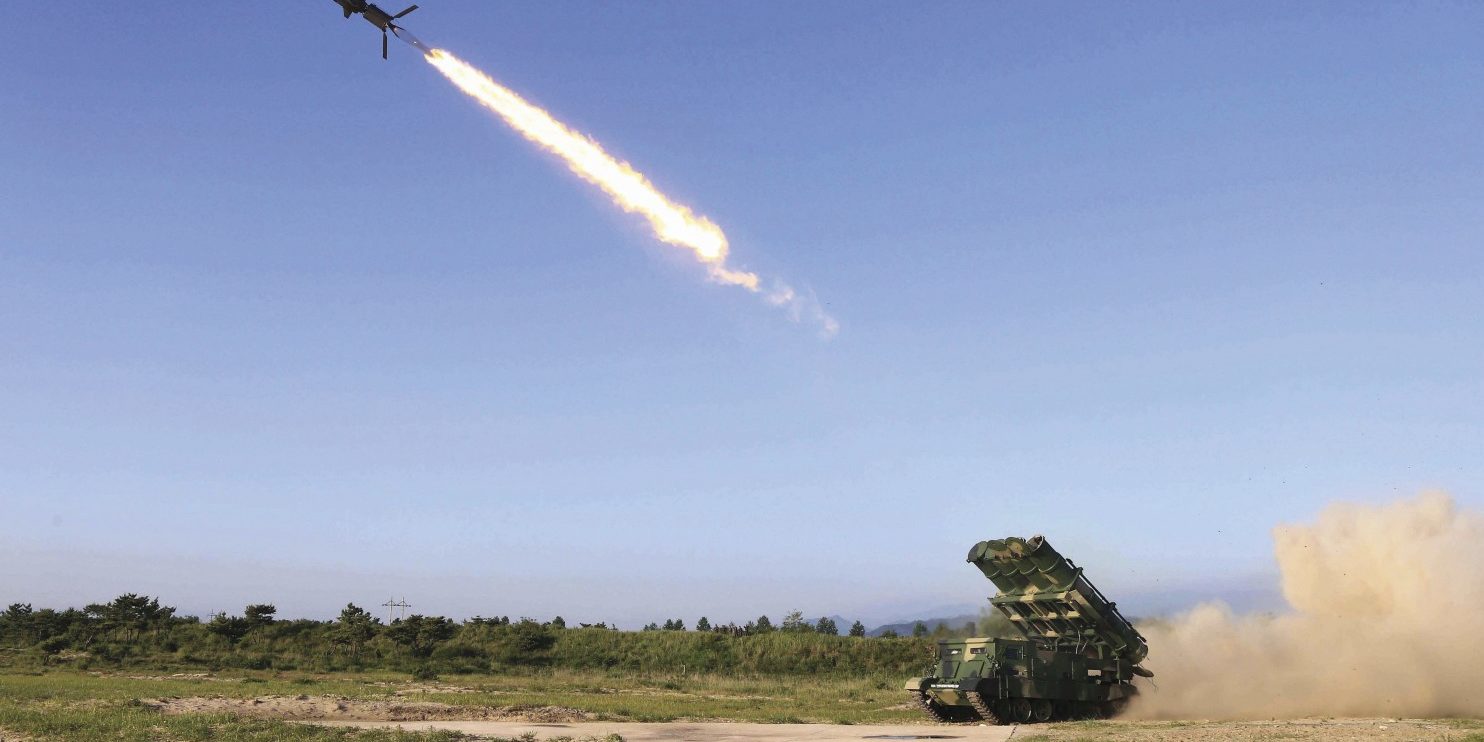Facts
| Missile Designation | Kumsong-3 |
| Variants | KH-35 (Russia); KH-35U (Russia) |
| Mobility and Role | Surface-to-Surface Anti-Ship Cruise Missile |
| Designer/Producer | Zvezda-Strela State Scientific-Industrial Center (Soviet Union) |
| Range | 130-250 km |
| Warhead Type and Weight | Conventional – 480 kg |
| MIRV and Yield | No MIRV/145 kg |
| Guidance System/Accuracy | Inertial; Glonass; Active Radar Seeker; Reportedly: Infrared Terminal Seeker |
| Cruise Altitude | 10-15 m |
| Stages/Propellant | 2/Solid Fuel Booster + Turbofan |
| IOC/Retirement | June 2014 (first tested)/Still Active |
| Status/Number of Units | In Development/Unknown |
| Launch Vehicles | Ground-Based Vehicles; Naval Surface Ships |
Overview
The Kumsong-3 is a variant of the Russian-made cruise missiles: the KH-35 and KH-35U. Originally designed in 1983 by the Soviet Union,[1] the North Korean variant more closely resembles the KH35U which Russia deployed in 2003. The Kumsong-3 travels at subsonic speeds and uses inertial guidance, however, there are indications that the design and possibly the guidance system of the Kumsong-3 differs from its Russian counterparts. Photographic analysis has suggested that the Kumsong-3’s booster and separation design differ as well as the body length and it is possible that the Kumsong-3 adds an infrared terminal seeker.[3] In its coastal defense configuration, which it was seen in during its first test on June 8, 2017, it is mounted on a tracked all-terrain launcher, which carries four Kumsong-3 missile canisters. It was also seen mounted on a Korean People’s Navy corvette in 2015, where Kim Jong-un observed it being launched in February of that year.
On April 14, 2020, and March 21, 2021, North Korea conducted the second and third tests of the system.
Strategic Implications
The exact capabilities of the Kumsong-3 are still not known, however, based on its variants, the KH-35 and KH-35U, it can be assumed that the Kumsong-3 will greatly add to North Korea’s Anti-Access/Area-Denial capabilities.[5] Analysts have estimated that the payload on the Kumsong-3 has the capability to take out an American aircraft carrier.[6] This significant improvement to North Korean missile technology, along with the most recent tests of the missile, compounds the threat to the United States and its allies operating in the Asia-Pacific region. Additionally, the DPRK has exported it to other countries, including Myanmar, which mounts the Kumsong-3 on its F11 Aung Zeya-class frigate.
Sources:
[1] http://www.globalsecurity.org/military/world/russia/as-20.htm
[2] http://www.cnn.com/2017/06/07/asia/north-korea-missiles-launch/index.html
[3] https://missilethreat.csis.org/missile/kumsong-3-kh-35-variant/#enref-2257-7
[4] https://missilethreat.csis.org/missile/kumsong-3-kh-35-variant/#enref-2257-7
[5] http://thediplomat.com/2017/06/north-korea-launches-multiple-coastal-defense-cruise-missiles-into-sea-of-japan/
[6] http://www.cnn.com/2017/06/07/asia/north-korea-missiles-launch/index.html

